The world of equine sports is vast and diverse, encompassing a range of disciplines that showcase the beauty, grace, and athleticism of horses. However, within this sphere lies a practice that has sparked widespread controversy and debate: the creation of the “big lick” horse. This term refers to a specific gait achieved through methods that have raised serious ethical concerns. As we explore the intricacies of this practice, it’s important to understand its origins, the controversy it entails, and the legislative and ethical measures being taken to address it.
The Distinctive Heritage of the Big Lick Horse
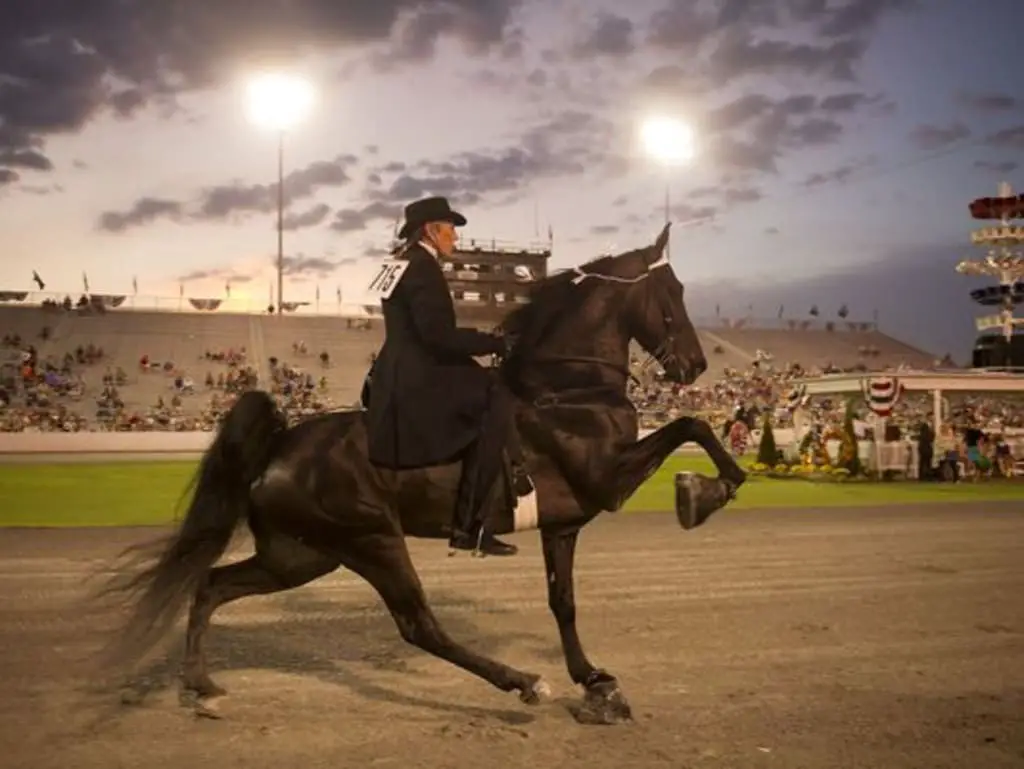
The big lick horse is a symbol deeply entrenched in Southern United States traditions, representing a cultural phenomenon that goes beyond competitive equine events. To fully comprehend its significance, one must consider the heritage and the unique features that define these horses and their role in the cultural landscape.
Historical Roots and Cultural Impact
Originating from the traditional Southern horse shows, the high-stepping gait of the big lick horse became a coveted spectacle, symbolizing prestige and expertise among enthusiasts. This pursuit of showmanship has left a lasting imprint on Southern culture, evolving into a symbol of regional identity.
Defining Features of the Big Lick Gait
- Exceptional elevation of the front legs
- The resounding rhythm of hooves that accentuates their performances
- An extraordinary show ring presence that sets them apart
The Transformation of the Tennessee Walking Horse
The Tennessee Walking Horse was once revered for its natural “running walk,” but the increasing desire for an exaggerated gait led to the emergence of the big lick style. This evolution has had profound effects on how these horses are trained and showcased.
Contrasting Aesthetics and Natural Capabilities
The visual impact of the big lick gait contrasts sharply with the Tennessee Walking Horse’s innate grace. This discrepancy between the horse’s natural poise and the enhanced showmanship illuminates the core of the debate surrounding this practice.
Big Lick’s Role in Equine Traditions
The allure of the big lick has influenced breeding, training, and the economic framework of the equine industry. It has redefined the standards for horse shows in the South, shaping the benchmarks for training and evaluating these horses within their cultural context.
Cultural Significance and Ethical Dilemmas
While the big lick horse has contributed to the Southern regional identity, pride in this tradition must now contend with growing ethical concerns about the breed’s well-being. This tension highlights the need for a nuanced understanding of cultural heritage versus animal welfare.
Reverberations in Equine Sporting Practices
The big lick’s prominence raises important questions about the impact of cultural traditions on equine welfare within competitive settings, challenging the industry to reconsider its standards and the values it promotes.
Conclusion
An examination of the big lick horse sheds light on the complex interplay of history, culture, and ethical considerations that shape this distinct facet of equine sports. As the embodiment of Southern equine heritage, the Tennessee Walking Horse’s role in this dialogue encourages a thoughtful reassessment of equine sporting practices and their implications.
Understanding the Ethical Conflict of Horse Gait Enhancement
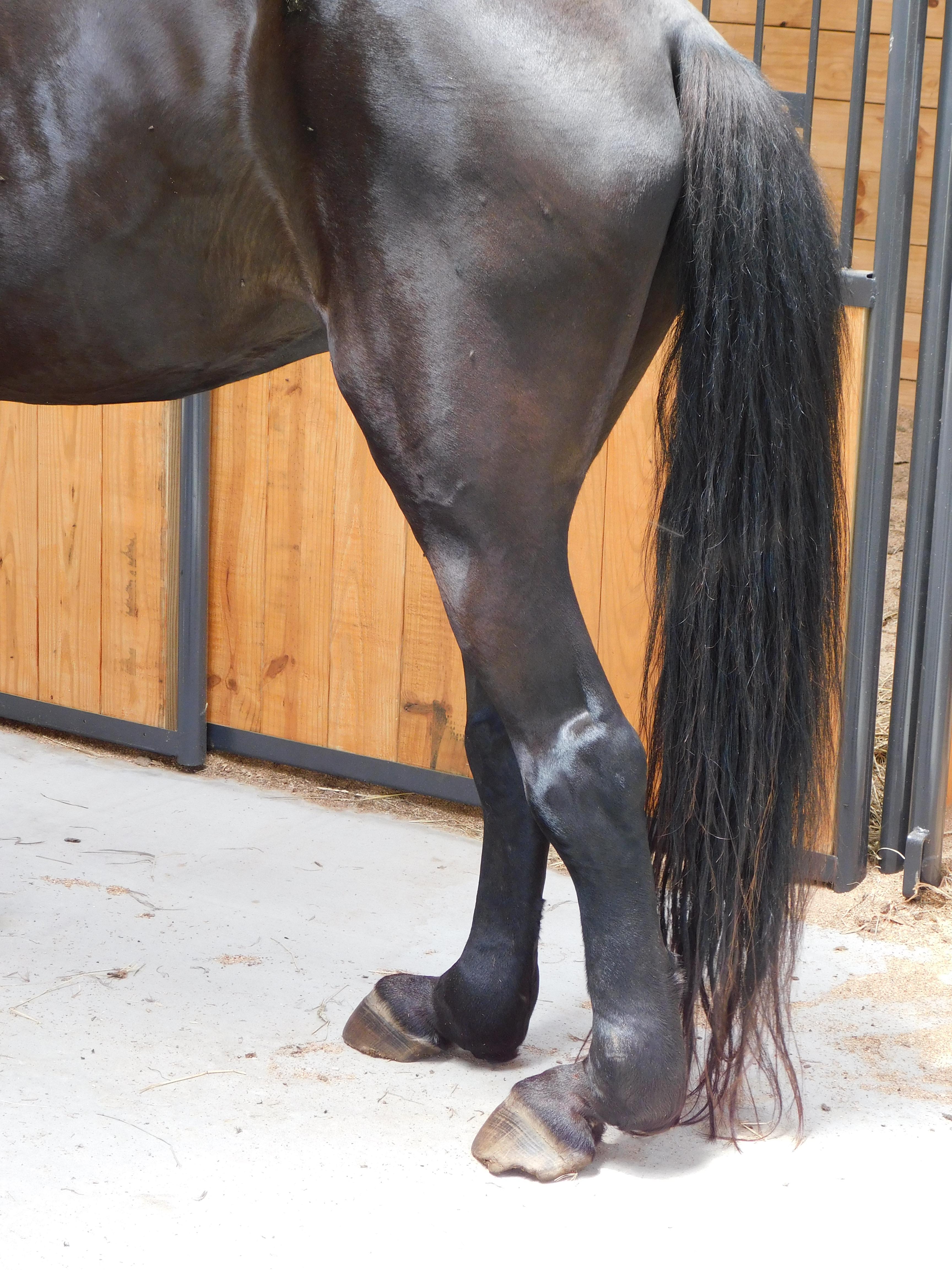
The endeavor to achieve the distinctive gait known as the “big lick” has led to practices that have garnered criticism for prioritizing spectacle over equine well-being. This has sparked a contentious debate in the equine sports community, with many advocating for the reconsideration of these methods in light of animal welfare concerns.
Scrutiny of Gait Enhancement Techniques
While the pursuit of an exaggerated gait has led to a variety of training techniques, the ethicality of these practices is under scrutiny. With some arguing for the possibility of ethical training, the controversy primarily surrounds techniques believed to cause harm to the horses.
The Ethical Debate over Soring
Soring, an illegal practice, is among the most condemned methods associated with creating the big lick gait, due to its intentional infliction of pain on equine athletes to force an exaggerated step. This procedure involves harmful substances and mechanical devices that distress the horses, sparking a significant ethical debate.
The Clash of Tradition and Animal Welfare
At the crux of the big lick horse discussion is the tension between upholding a cultural tradition and the ethical responsibility towards animal welfare. This impasse brings into question the validity of justifying cultural practices when they result in animal distress or pain.
Repercussions on Equine Health
The long-term health ramifications of gait enhancement methods extend beyond immediate discomfort, with horses potentially suffering from chronic conditions, psychological trauma, and irreversible damage to hooves and legs. These consequences compel the industry to consider the longevity and welfare of these horses.
The Global Stance on Big Lick Practices
Internationally, the controversy surrounding the big lick practice extends beyond American borders, with a universal movement advocating for the humane treatment of animals in sports. The global equine community’s call for humane practices adds to the urgency for reform in the industry.
As the conversation surrounding horse gait enhancement continues to evolve, the equine industry faces the challenge of balancing traditional practices with the imperative of animal welfare. This ongoing dialogue prompts a critical reevaluation of methods employed in the pursuit of the big lick gait, ensuring they adhere to humane standards that respect the integrity of the horse.
Advancing Equine Welfare through Legislative Action and the Horse Protection Act
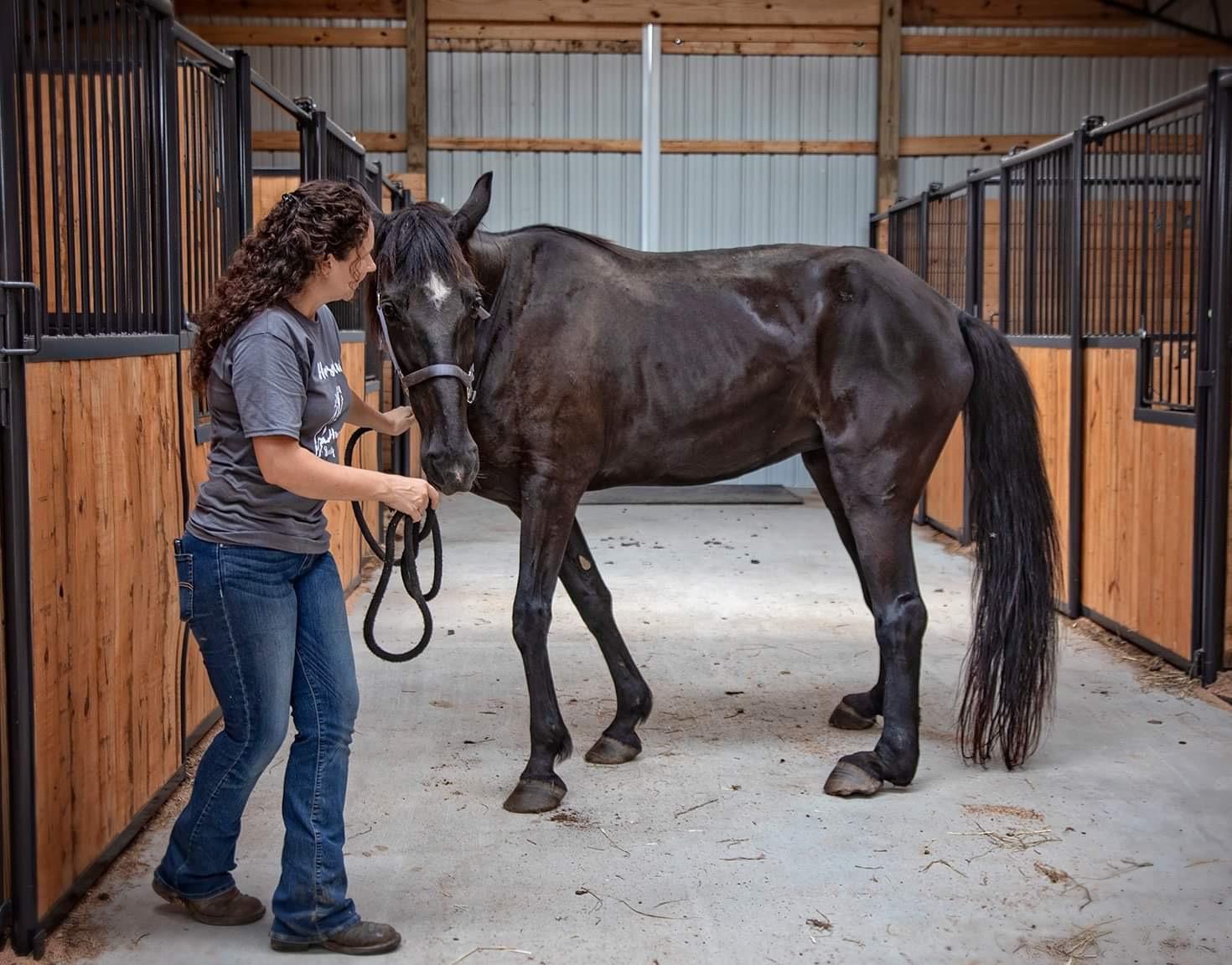
In the realm of equine sports, legislation is a critical tool for safeguarding horse welfare, particularly when confronting inhumane practices such as soring. The Horse Protection Act (HPA) is a testament to the commitment to ethical equine treatment, offering a framework that aids in the eradication of such practices and fosters a humane approach within the industry.
Insights into the Horse Protection Act
The Horse Protection Act, established in 1970, is a legislative milestone designed to abolish the cruel practice of soring. The Act explicitly prohibits the following:
- Showing, selling, or transporting sored horses in any commercial context.
- Charging fees for horse inspections intended to enforce the Act.
- Employing devices or substances that induce or conceal soring.
Furthermore, the HPA mandates that event organizers prevent the participation of sored horses, underscoring the collective responsibility to combat this abuse.
Obstacles in Implementing the Horse Protection Act
Effective enforcement of the HPA is hindered by issues such as:
- Limited resources allocated for inspections and regulatory enforcement.
- Varying interpretations and enforcement of the Act’s guidelines.
- Opposition from factions within the equine community that are resistant to change.
These obstacles emphasize the necessity for reinforced efforts and allocation of resources to actualize the Act’s intentions.
Reinforcing the Horse Protection Act
Enhancements to the HPA have been proposed to address existing loopholes and amplify repercussions for violations. Proposals for improvement include:
- Elevated fines and the potential for felony charges for repeat offenders.
- A framework for more uniform and rigorous inspections.
- Educational initiatives to raise awareness about the HPA and ramifications of soring.
Such measures aim to strengthen the Act’s capacity to safeguard horses and ensure the ethical conduct of equine events.
Inspection Procedures and Compliance with the Horse Protection Act
The success of the HPA is contingent upon the establishment of rigorous inspection procedures. Compliance is facilitated by:
- Comprehensive training for inspectors to identify soring.
- The adoption of technological advancements to detect illicit practices.
- Cooperation among event organizers, competitors, and regulatory agencies.
Adhering to these procedures is vital for upholding a welfare-centric and equitable competition milieu.
The Integral Role of Equine Community Members in Enforcing the Horse Protection Act
The effective implementation of the HPA also relies on the active participation of all members within the equine sector. Every individual, from trainers to spectators, has a role to play in:
- Denouncing soring and all forms of equine mistreatment.
- Fostering ethical training methodologies and conscientious horse care.
- Advocating for transparency and responsible practices in the industry.
It is through united efforts that the principles of the HPA can be realized, nurturing a culture that honors equine welfare.
State-Level Legislation and Its Contribution to National Efforts
State-specific laws serve as a supplementary safeguard for horses, offering additional provisions that:
- Reinforce federal rules with more stringent local penalties.
- Address unique regional issues not covered by the HPA.
- Mobilize community involvement in identifying and reporting abuse.
These state initiatives play a significant role in shaping the national landscape of horse welfare and contribute to the collective movement against soring.
The Horse Protection Act is a legal bulwark in the fight against soring, a practice antithetical to equine welfare. The reinforcement of this Act, coupled with the unwavering commitment of the equine community, is indispensable in maintaining the well-being of horses and upholding the ethical standards of equine sports.
Exploring the Impact of Inhumane Training on the Tennessee Walking Horse
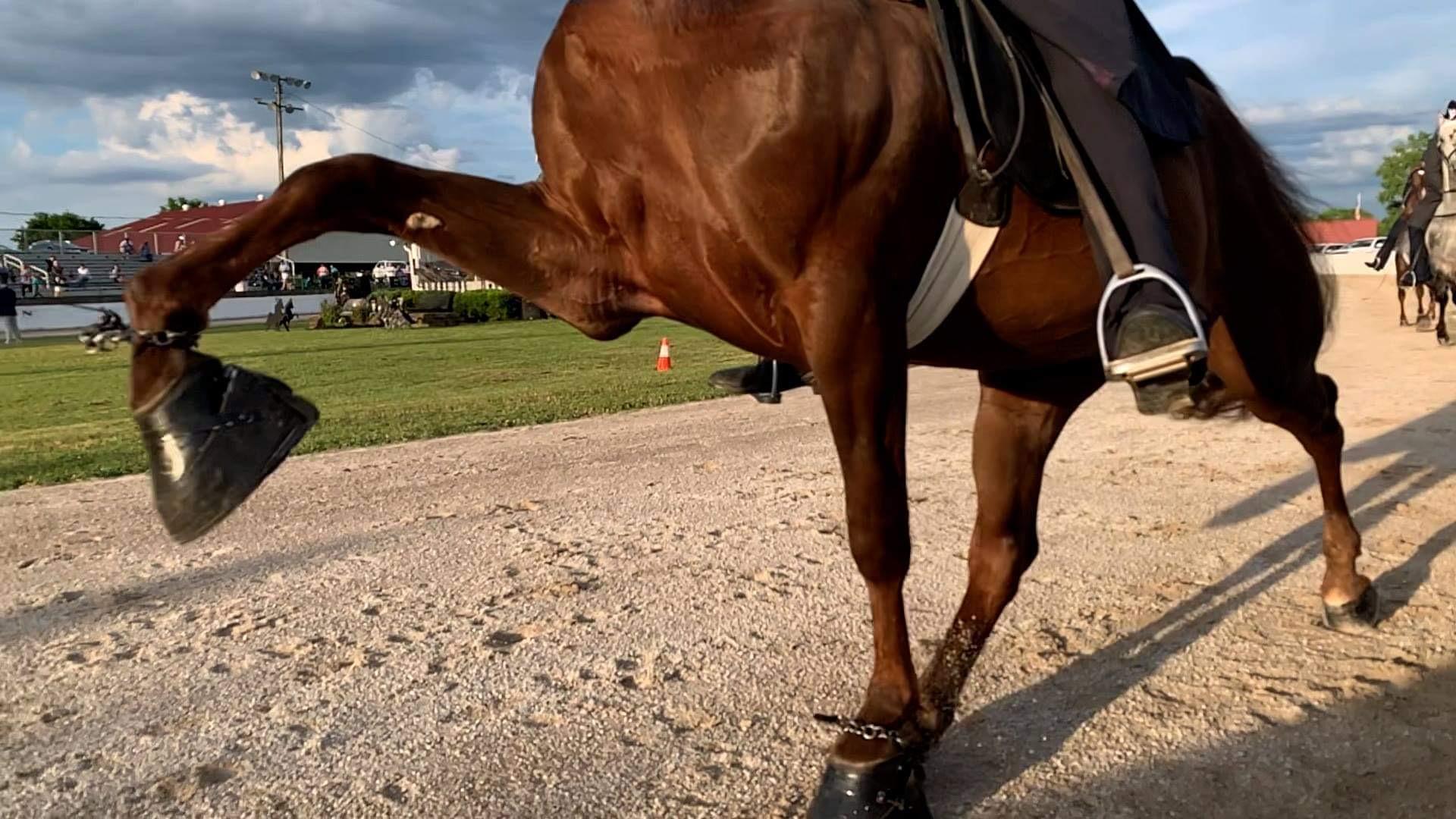
The highly regarded Tennessee Walking Horse, known for its smooth and innate gaits, has unfortunately become central to the performance horse controversy. Inhumane training practices aimed at enhancing these natural movements have led to a decline in the breed’s image and have enforced a call to action for humane treatment reforms in the industry. The repercussions of such practices extend beyond individual animals, affecting the breed’s legacy and prospective evolution.
Natural Versus Unnatural Gait Enhancement
With a genetic predisposition for the “running walk,” Tennessee Walking Horses are inherently capable of performing this gait without any artificial interventions. However, the breed’s innate elegance is being overshadowed by the inhumane artificial enhancement of its gait, resulting in a misrepresentation of what these horses are naturally bred to achieve and diminishing the authentic heritage valued by horse lovers.
The Breed’s Deteriorating Image
The growing awareness and discussion surrounding inhumane training methods have begun to tarnish the breed’s standing. The negative connotations associated with unethical training have not only deterred new enthusiasts but have also impacted the breed’s perception among the general public, horse lovers, and potential breeders.
The Price Paid by Horses
- Enduring pain from the use of inhumane training techniques.
- Long-lasting harm to their hooves, limbs, and overall physical health.
- Emotional distress manifesting in behavioral problems and a decline in life quality.
Changing Perceptions and Advocating for Humane Treatments
As awareness of these unethical practices grows, public sentiment towards shows featuring the artificially enhanced gait is changing. The knowledge of the suffering caused by these practices has led to a decrease in spectatorship and participation at such events. The public’s increasing call for humane treatment is reshaping the industry, leading to heightened demands for accountability and transformation.
Reform Movement and Its Ripple Effect Across the Industry
The far-reaching effects of these practices necessitate reform that spans the entirety of the equine sector, including breeders, trainers, and enthusiasts. The collective call for change is driving a movement towards preserving the Tennessee Walking Horse’s integrity and ensuring its future without the taint of inhumane training.
Promoting Change Through Awareness and Advocacy
Advocacy and educational initiatives are vital in the fight against the unethical treatment of Tennessee Walking Horses. Elevating knowledge about the breed’s natural talents and the harmful consequences of inhumane training can catalyze a shift in both industry norms and societal viewpoints, fostering a more ethical approach to horse training and exhibition.
Envisioning a Humane Future for the Tennessee Walking Horse
As the community looks to the future, it is essential to redefine the path for the Tennessee Walking Horse, emphasizing its inherent grace without the need for harmful interventions. Advocating for humane training and recognizing the breed’s authentic qualities will help restore its distinguished status within the equine community, expelling the stigma associated with inhumane training practices.
Fostering Humane Big Lick Horse Training Approaches
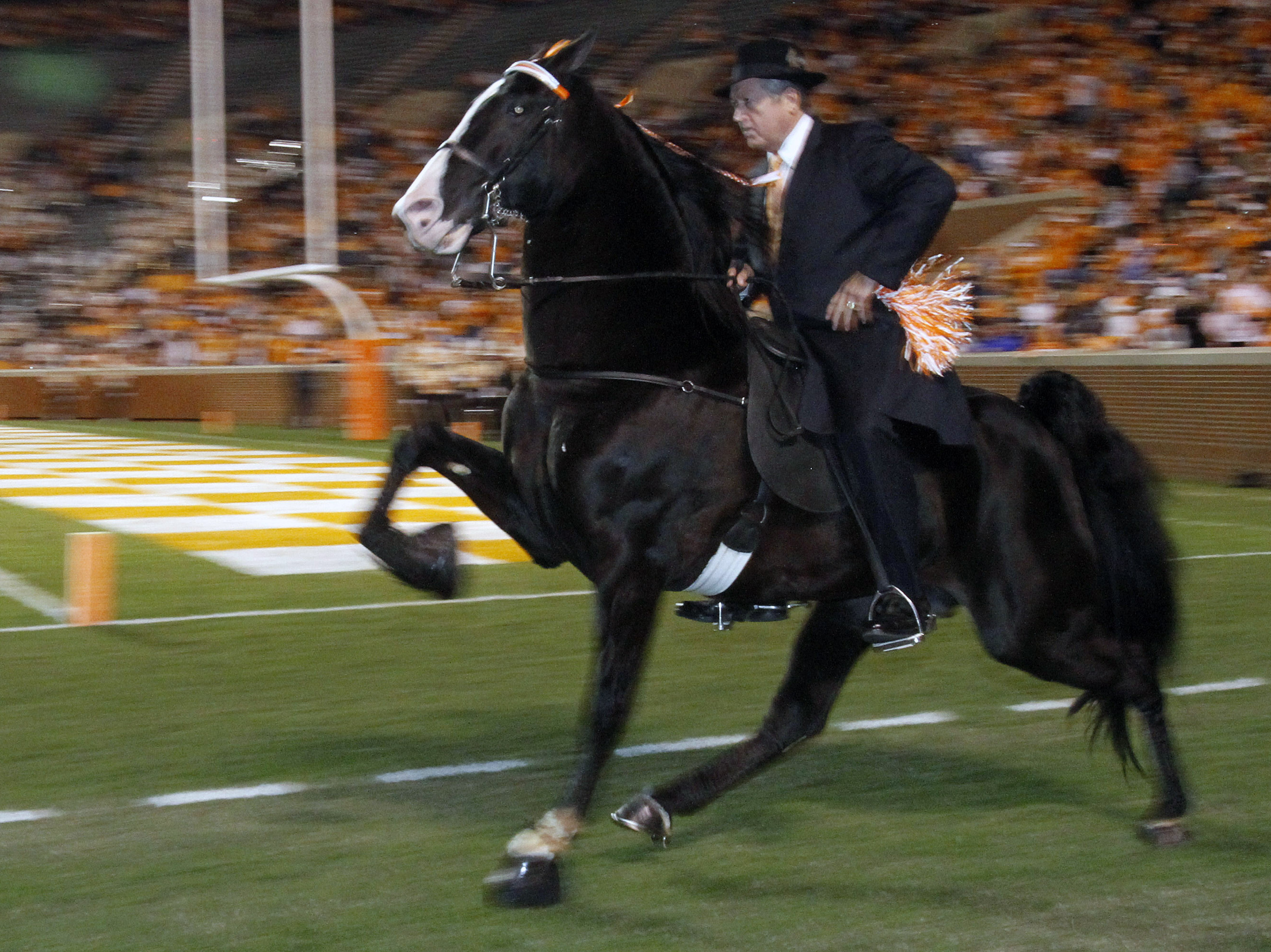
The shift towards humane training methodologies for big lick horses signals a positive development in equine sports. There is a growing emphasis on training regimens that respect the horse’s natural aptitude and ensure their well-being, both physically and mentally.
Beneficial Application of Padded Horse Shoes
When utilized correctly, padded horse shoes can play a crucial role in protecting the equine athletes by absorbing impact and alleviating limb stress. However, it’s vital to steer clear of inhumane practices, such as excessive padding or pressure-shoeing, which can lead to the horse’s discomfort and injury. The equine industry must remain diligent in recognizing and promoting only those practices that prioritize the horses’ health.
Advancements in Ethical Training Programs
As training regimens advance, there is an increasing focus on developing strategies that capitalize on the horse’s inherent gait capabilities without causing pain or distress. These evolved methods include a combination of positive reinforcement, conditioning to bolster muscle development and flexibility, and techniques that align with the horse’s natural gait patterns, thereby improving trust and the animal’s overall condition.
Transforming Judging Standards to Support Welfare
Amending the judging standards in competitive events to value the horse’s authentic movements and physical condition can greatly influence the approach trainers take. By rewarding horses that display their natural gaits and seem well-cared-for, the industry can spur a greater adoption of humane and responsible training methods.
Technological Contributions to Horse Welfare
Technological advancements are increasingly integral in enhancing horse welfare. Tools such as advanced gait analysis and biometric monitoring provide comprehensive insights into a horse’s condition, enabling trainers to adjust their methods to better support the horse’s innate abilities and health.
Unified Actions for Upholding Ethical Training Values
The progression towards ethical training is a collaborative endeavor involving trainers, veterinarians, owners, and the audience. Each group has an essential role in demanding and reinforcing ethical standards in training and competition, thereby upholding the welfare of big lick horses.
Educational Pathways to Ethical Training Proficiency
Education plays a pivotal role in fostering change within the equine industry. The development of certification programs focusing on ethical training practices will ensure that trainers are equipped with comprehensive knowledge and skills, promoting a well-rounded approach to horse care.
Embracing humane training alternatives is key to preserving the integrity and welfare of big lick horses. The continued advocacy for ethical standards is crucial for the future of equine sports, ensuring that the grandeur and well-being of these horses remain at the forefront of competitive displays.
Moving Forward: The Future of Horse Show Ethics
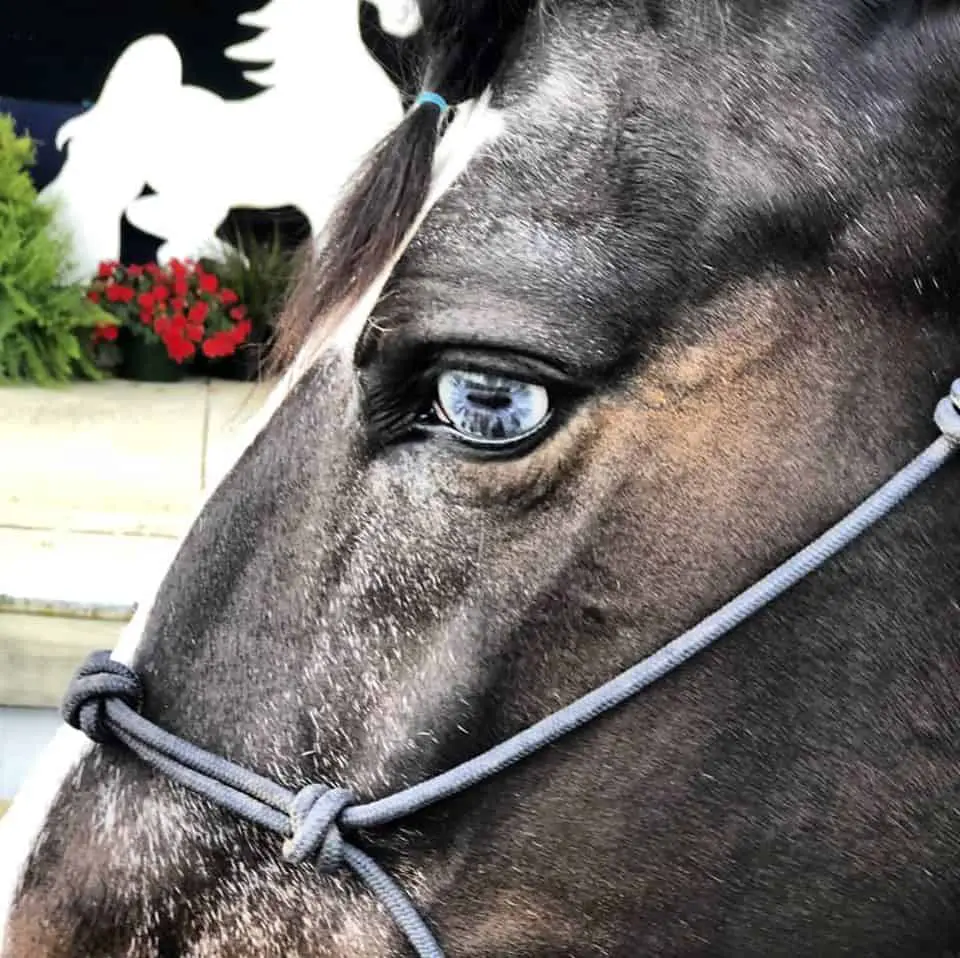
Charting a path toward enhanced horse show ethics involves a united dedication to fostering an atmosphere where equine welfare is the primary focus. The industry’s proactive efforts to create a standard where respect for horses is integral to competition and spectatorship will usher in a progressive chapter in equine sports.
Legislative Innovations and Horse Show Reforms
Introducing comprehensive legal measures that specifically address the intricacies of soring and other malpractices can significantly fortify the fight against these unethical acts. Potential policy enhancements could encompass:
- Explicit delineation of banned training techniques.
- Frameworks for compassionate equine management.
- Enforced penalties for violations.
Uniform application and rigorous enforcement of these refined laws are crucial for cultivating an ethical standard that reflects contemporary views on animal treatment.
Revamping Competition Guidelines
Reforming the criteria within competitive horse showing to highlight the horse’s inherent prowess is key. This entails:
- Developing standards that celebrate the horse’s authentic attributes.
- Deterring exhibitions of unnatural enhancements.
- Equipping judges with knowledge of ethical evaluation methods.
Adjusting the competitive framework will motivate participants to embrace ethical practices, promoting a just and compassionate environment for equine participants.
Community Engagement and Advocacy
Collective action within the equine community can catalyze meaningful reform. Initiatives might include:
- Educational outreach on horse show ethics.
- Platforms for collaborative dialogue and exchange of ethical practices.
- Partnerships with organizations dedicated to animal welfare.
These advocacy measures can shape a collective ethical mindset that resonates across the equine sporting landscape.
Cultural Shifts and the Role of Media
The media’s capacity to influence societal norms can be instrumental in advocating for horse show ethics. Media efforts could involve:
- Publicizing accounts of ethically achieved training milestones.
- Investigative journalism that brings to light detrimental training methods.
- Collaborations with prominent voices that endorse ethical standards in equestrian events.
With the media’s outreach, the call for reformation can reach a broader audience, fostering greater awareness and commitment to humane practices in the sport.
Future Projections: A Vision for Ethical Horse Shows
In the envisioned future of horse shows, a shared responsibility for animal welfare prevails. This ideal is founded on:
- A culture of continuous education for industry participants.
- Open practices subject to external review and feedback.
- Technological innovations that support non-intrusive safety measures and performance assessment.
With these goals as guiding principles, the equestrian community can strive for an era where the grandeur of horse shows aligns with the ethical and respectful treatment of these cherished animals.
If you’re delving into the diverse and intricate world of equine breeds and terms, you may have come across the term “Big Lick” horse. To expand your equine knowledge further, we have several resources that could pique your interest. Learn about the unique characteristics of different horse coats and types by exploring our article on what a buckskin horse is, or discover the ins and outs of horse transportation with our piece on what a horse lorry is. For those captivated by the beauty of equine coats, our article on what a dappled horse is offers a closer look at this stunning pattern. Each article is designed to enhance your understanding of these magnificent creatures and the terminology used in the equestrian world.
Getting Involved: How You Can Help
Individual action is a powerful force for change. By getting involved and contributing to the movement against the unethical treatment of horses, each person can help ensure a brighter future for these animals.
Educating Others about the Big Lick and Soring
Education is key in the fight against soring. By informing others about the realities of the big lick horse and the cruelty of soring, you can help build a knowledgeable and compassionate community that stands against these practices.
Supporting Organizations Fighting Against Animal Cruelty
Supporting organizations dedicated to fighting animal cruelty is another effective way to contribute. These groups work tirelessly to protect horses through advocacy, education, and legal action, and they rely on public support to continue their important work.
In conclusion, the big lick horse serves as a poignant reminder of the ethical responsibilities we hold within the realm of animal sports and entertainment. As we strive to balance the admiration of equine performance with the imperative of equine welfare, it is clear that the future of horse show ethics will be defined by our collective actions and commitment to change. By staying informed, advocating for humane practices, and supporting the efforts of those fighting against animal cruelty, we can all play a role in shaping a more ethical and compassionate equine industry.



